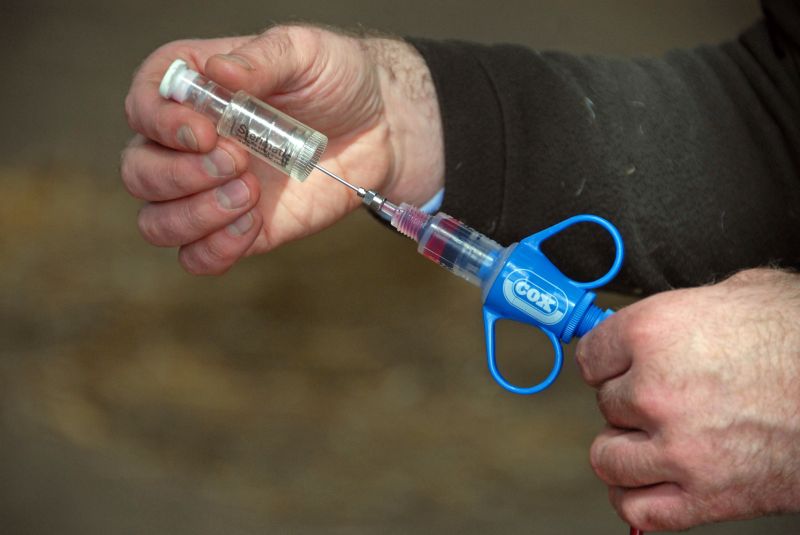
Vaccination of the UK’s calves and sheep against key livestock diseases has risen to one of the highest levels in seven years, new figures show.
Almost 10 million doses of vaccine were sold for use in cattle in 2018, a sign that farmers are continuing to reduce antibiotic use.
The big increase is mainly in vaccines to protect against pneumonia in calves, a condition many vets would otherwise end up treating with antibiotics.
Derek Armstrong, lead vet from AHDB, says: “Sales here have risen 35% since 2011, with two fifths of animals receiving vaccinal protection in 2018.
“Vaccines for Infectious Bovine Rhinotracheitis have also gone up 50% over the same period.”
Mr Armstrong explains that the trend for respiratory disease prevention is relevant at this time of year as cattle head into the high-risk, high-stress period around weaning and winter housing.
“Prevention is definitely better than cure – heading off infection with careful nutrition, good ventilation and appropriate vaccination will also increase growth rates as animals won’t be fighting off infection.”
Figures also show that one in five breeding cows now receives vaccination for calf enteritis, protecting the calf through passive transfer of antibodies in her colostrum.
The data does, however, show that vaccine use to prevent Bovine Viral Diarrhoea (BVD) fell to its lowest level since 2011.
Mr Armstrong believes this could be a positive sign that ‘BVD Free’ herds are now concentrating on biosecurity rather than vaccination.
“It’s something the industry needs to keep an eye on – especially as BVD is a disease which impacts the immune system and can lead to bacterial infections which then need antibiotic treatment,” he says.
The UK sheep sector also saw the highest uptake of vaccines in over six years with almost 39 million doses sold in 2018.
Chair of the Sheep Antibiotic Guardian Group, Dr Fiona Lovatt, says that for the first time since 2012, over two-thirds of all sheep which should be vaccinated against clostridial diseases were vaccinated.
Meanwhile, over half were vaccinated against Pasteurella: “This is positive step as we try to shift behaviour away from treating disease to planning ahead to prevent disease and protect the flock,” she says.
Despite issues with vaccine supply, use of vaccines to protect against abortion have also risen steadily since 2013.
Dr Lovatt adds: “However, further uptake could deliver significantly improved lambing percentages on-farm.
“It is still only one in four first-time breeding ewes that is protected against Toxoplasma, and two in every five against Enzootic Abortion.”
While sales of foot rot vaccine had been steadily climbing since 2013, there was a small drop in uptake from 15% of breeding animals in 2017 to 13% in 2018.
This may have been due to the dry summer, Dr Lovatt suggests.
“Foot rot vaccination is one of the important elements of the five-point plan to control lameness and a key RUMA Task Force target; more shepherds should consider making it part of their lameness control strategy.
“Overall, it’s not essential for every flock to use every available vaccine, but there’s definitely a case for every shepherd to plan for disease control alongside their vet as they reflect on the risks their flock faces.
“For example, foot rot vaccine should always be considered if more than 2% of the flock is lame with foot rot at any one time,” she says.
The National Office of Animal Health (NOAH) said the overall increase in vaccine uptake is 'excellent news' for health and welfare of the UK’s herds and flocks.
The group will be working alongside RUMA and its members with a #VaccinesWork campaign this autumn.
